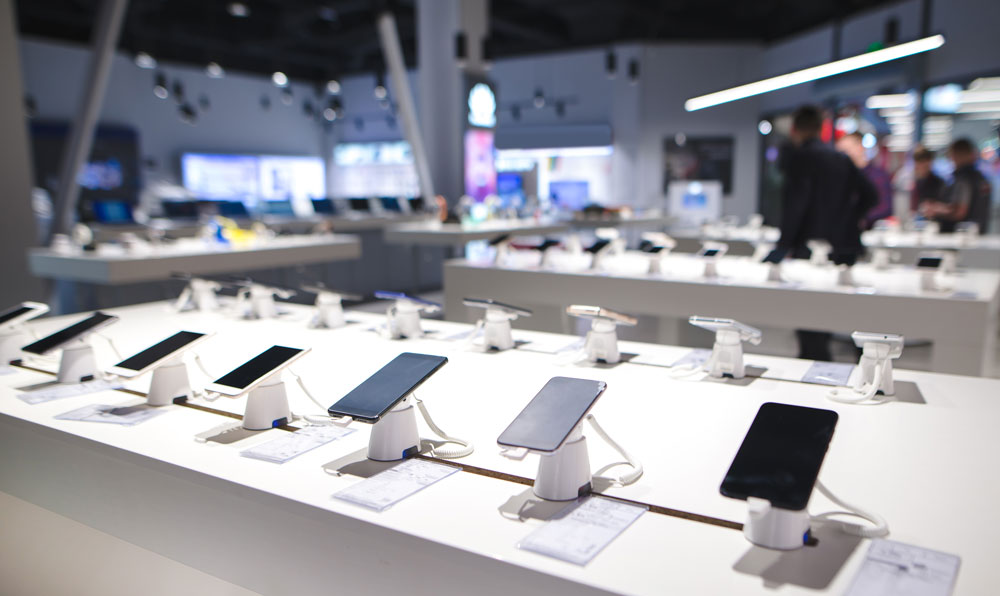With hundreds of thousands of products in a store and high-intensity promotional events triggering demand, having good visibility of product availability on the shelf becomes very complex.
According to a Grocery Manufacturers Association (GMA) study for FMCG products in the U.S., stock-outs are one of the main operational pains in FMCG retail companies, reaching an industry average of 8%.
The biggest problem is that only 25% of these events correspond to in-system stock-outs, i.e., those related to visible stock-outs that typically trigger re-stocking actions.
The rest of the cases, up to 75% of the time, correspond to phantom inventory: when the products should be available on the sales floor, but in practice, they are not. In many cases, the product is in the warehouse; in other cases, the product is nowhere to be found, either due to shrinkage, wrong inventory count, theft, or others.
In addition to inventory availability, retailers face the problem of proper in-store execution. This means that the price on the label is correct if there is a promotion; it is correctly implemented both in price and signage; and finally, the products are in the right place, either according to the planogram or in a promotional display following the current commercial campaigns.
The impact of poor execution
One of the biggest problems is that many stock-out events correspond to not-so-high rotation products. For the same reason, these issues go unnoticed and have a significant duration. In general, retailers tend to focus on the availability of “Top X” products, with management initiatives at both the supply and in-store levels.
According to some studies, 26% of phantom shrinkage has a duration of 4 or more days, generating 85% of the associated losses, precisely in products with low visibility.
The use of Robots in the Sales Room
One of the most striking initiatives seen in the market is using robots that move through the sales floor, searching for potential breaks, errors in planogram, and price labels.
Their ability to find these execution problems is getting better every day, and there are even some that could move through the store along with the customers during the day (still, they haven’t solved how to keep small children from trying to play with them).
Breakage Prediction
There is a problem related to the effects of the intense promotional activity that exists today, with hundreds of products on promotion at the same time on a sales floor: the increase in demand during the day can be significant, and therefore, the probability of unnoticed breakage can be substantial.
Discovering a breakage event is relevant. However, the most significant opportunity is precisely to predict potential breakages on the sales floor during the day and manage their replenishment in advance.
Use of Artificial Intelligence
One of the great opportunities existing today is to use the products’ real-time sales information in each store to feed sophisticated artificial intelligence algorithms. The AI will identify anomalous sales that may be related to a bad execution event, whether it is pricing errors in shelf labels, poor promotional implementation, or lack of inventory on the shelf. Using the same technology, it is possible to detect changes in demand during the day and anticipate shelf breakage events.
Achieving accuracy in AI results is not easy. It is necessary to combine several models with different degrees of sophistication, such as Neural Networks, Random Forest, Time Series, Support Machine Vector, and others. Their combination allows to contrast results and eliminates errors dynamically.
Real-time actionability
It is critical to connecting intelligence with action in real-time. There are mobile task-management systems with integration capabilities. However, in many cases, these systems are designed to manage general tasks, such as sending marketing campaigns, commercial requirements, and incidents. Using this type of solution to solve tasks at the product level is highly inefficient, generating adoption problems, inefficiency, and ineffectiveness in taking the improvement opportunities.
At Frogmi, we have a task-management solution specifically designed to address product management opportunities through artificial intelligence.
Some relevant features are:
-
Intelligent Navigation
In-store staff can execute product-level tasks up to 30% faster than traditional task-management systems thanks to the application’s intuitive design that allows browsing through the store, enabling staff to find the most relevant products and their associated tasks in seconds.
-
Collaboration and teamwork
Each person in a team can perform a task on a product, and once it is done, it immediately “disappears” from the team’s to-do list.
-
Interconnection between different areas
The platform allows rules to assign resolution responsibility to a specific management team. Example: If a probable breakage task is sent and cannot be solved because there is no inventory on the premises, it is possible to automatically send a task to the supply area to make the corresponding inventory adjustment and trigger the replenishment of the product.
Contact us here if you want to learn more about how Frogmi can help you improve your business results using artificial intelligence and a specialized task manager.













